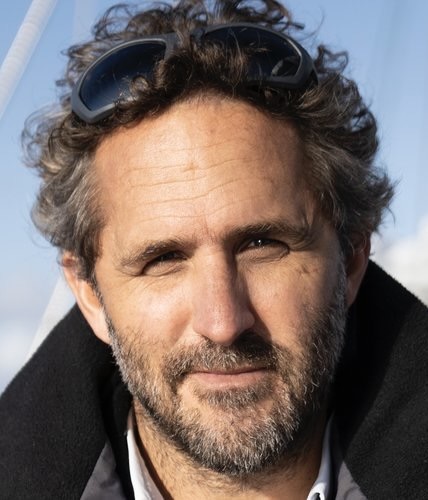Go With The Floe
Unveiling The Arctic’s Secrets Where Our Future Lies.

-image.webp)
WHEN WE THINK ABOUT the Arctic, or the North Pole as we most commonly refer to it, pictures of polar bears, ice floes, and glaciers come to mind. But in fact, little is known about this extreme region, which is the sentinel of climate change. How come we have explored the Moon more than the Arctic when it is actually much closer to us? What if the future of humanity depended on understanding and preserving this unique region and its rich biodiversity?
The Arctic is a region of 21 million square kilometers on the borders of the North Pole, covered in its center by the only polar ocean on the planet. The sea ice is omnipresent there. But today, the Arctic is under pressure: global warming (three to four times more intense than elsewhere), pollution, and even geopolitical and economic tensions linked to access to its unexploited resources put a strain on it. We need to understand and protect this unique environment and unveil the secrets of its little-known biodiversity before it is irrevocably altered. We are probably the last generation that can do it!
In the footsteps of the great polar explorers, following the successful drift from Fridtjof Nansen and his crew onboard the Fram (1893) and the scientific expedition onboard the schooner Tara (2006-2008), the Tara Ocean Foundation imagined, ten years ago, a one-of-a-kind scientific vessel: Tara Polar Station.
Some describe it as the “ISS of the North Pole,” others as a floating “UFO.” What is certain is that Tara Polar Station is not like a traditional exploration vessel. Building it has proven to be an exciting challenge on a human and technological level. First round, then redesigned in an oval shape, this state-of-the-art platform is built to drift with Arctic Sea ice for extended periods, enabling scientists to collect long-term data over 20 years.
Such continuous and lengthy observations of the Arctic have never been done before. Yet, they are essential for our future. The 2006 Tara Arctic expedition, a 507-day drift in the ice, had already revealed the fragile state of the Arctic.
Tara Polar Station will build on this legacy and study the impact of climate change on Arctic biodiversity and its capacity to adapt. This knowledge will help us anticipate changes at lower latitudes and support Arctic governance to limit human impact on the region and preserve our planet’s equilibrium. Extreme conditions at the North Pole have forced life to evolve in unique ways, providing unparalleled insights for science and progress in biotechnologies. This is what Tara Polar Station and its numerous associated international scientists, along with the French National Centre for Scientific Research (CNRS), will also unveil.
But Tara Polar Station is more than a research station. It is a hub for international collaboration, welcoming scientists, artists, and journalists from around the world. The station’s design incorporates cutting-edge technology to withstand extreme cold, high winds, and shifting ice conditions. Still under construction, it will soon include five laboratories. These include wet labs for water and ice collection and dry labs with microscopes, DNA sequencers, and atmospheric sensors. Groundbreaking research on ice dynamics, ocean circulation, and atmospheric processes will be conducted, providing critical data for improving climate models and predicting future changes.
The first expedition, Tara Polaris I, is planned for 2026 and will last about 18 months, with initially 12 scientists onboard. Isolated in an extreme polar environment for hundreds of days, the crew will be exposed to intense cold (up to -50°C) and an endless night in winter. With the first shift planned for spring, more scientists will then be able to embark. The mission is clear: to strengthen research in one of the most extreme environments on Earth and preserve this critical region for generations to come.
His Serene Highness Prince Albert II of Monaco, like his great-great-grandfather Prince Albert I of Monaco, has shown a profound commitment to Arctic exploration and preservation. Through the Prince Albert II of Monaco Foundation and Monaco Explorations, Prince Albert II has been the very first supporter of Tara Polar Station, followed by the French State, which covered 60% of the €21 million investment as part of its first Polar Strategy. Other support that has made this project a reality includes BNP Paribas, the Albedo Foundation for the Cryosphere, agnès b., the Didier and Martine Primat Foundation, Capgemini Engineering, the Veolia Foundation, and Bureau Veritas.
The Tara Ocean Foundation continually seeks support and donations to drive its groundbreaking scientific expeditions at the pole and around the world’s oceans with its famous schooner. Everyone can make a difference and contribute to this visionary and essential project.
Romain Troublé is the managing director of the Tara Ocean Foundation and president of Beyond Plastic Med.
The views and opinions expressed herein are the views and opinions of the author and do not necessarily reflect those of The Monegasque™.
Disclosure: The Monegasque™ enhances the editing process with the help of carefully selected AI tools. These tools provide valuable support without taking over the editing process completely, ensuring that the final product is the result of human creativity and expertise augmented by the benefits of enhanced technology. This article is protected under the copyright of The Monegasque™. Unauthorized reprinting, republishing, or rewriting of this content is strictly prohibited without explicit permission from The Monegasque™. Quotations from this material are permissible provided that a direct link to the full article on The Monegasque™ is included.